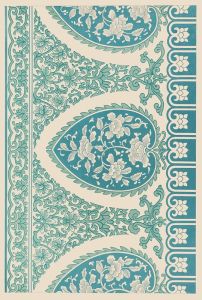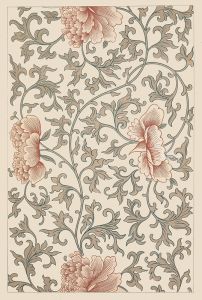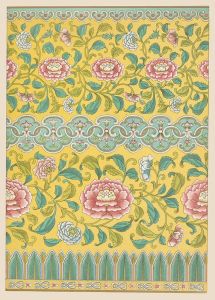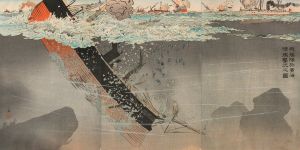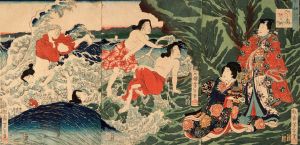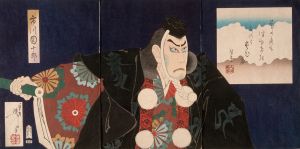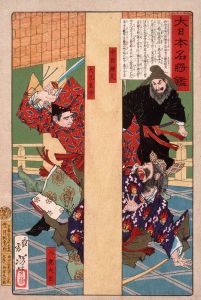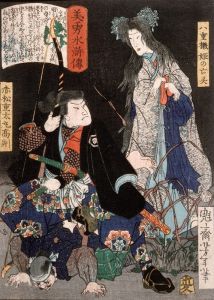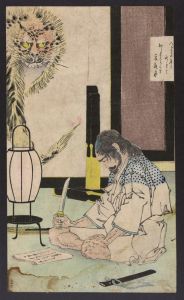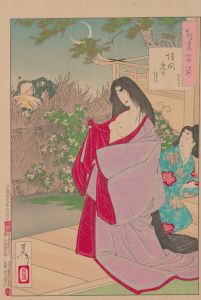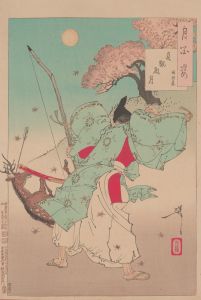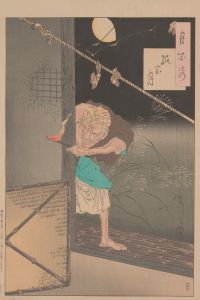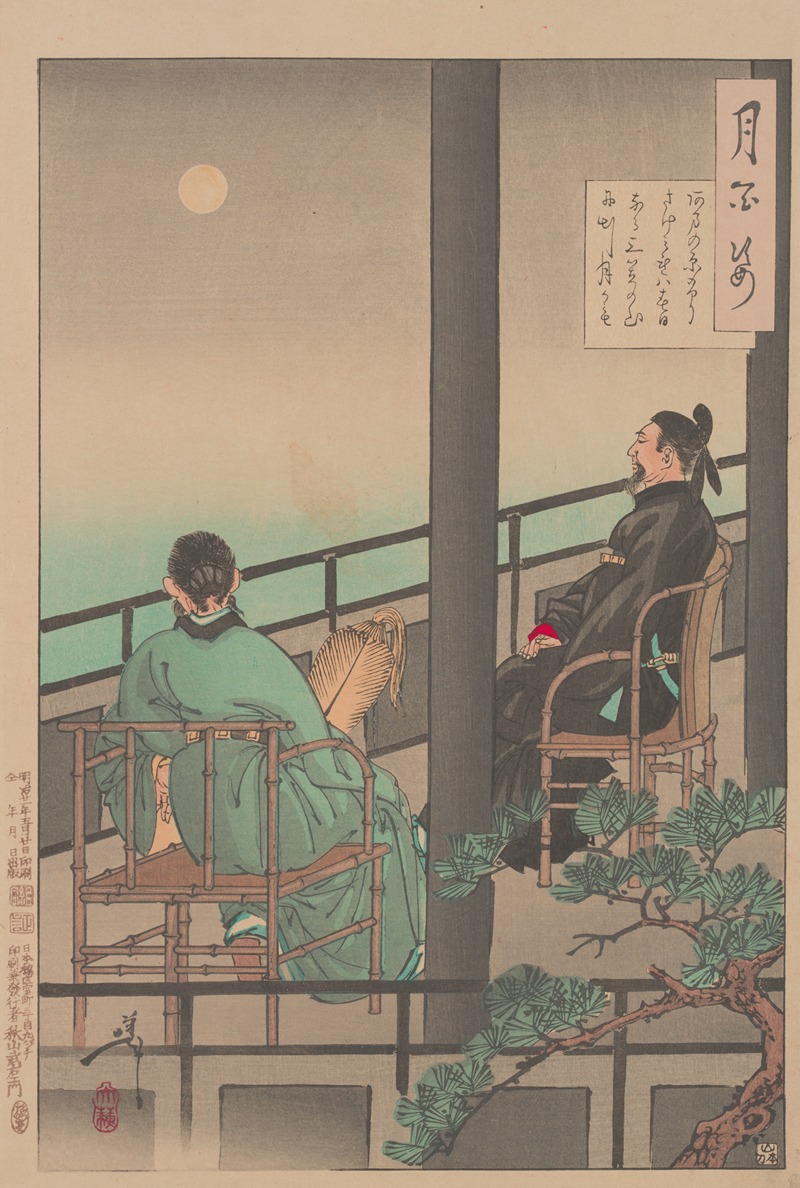
Nakamaro views the Moon in China
A hand-painted replica of Tsukioka Yoshitoshi’s masterpiece Nakamaro views the Moon in China, meticulously crafted by professional artists to capture the true essence of the original. Each piece is created with museum-quality canvas and rare mineral pigments, carefully painted by experienced artists with delicate brushstrokes and rich, layered colors to perfectly recreate the texture of the original artwork. Unlike machine-printed reproductions, this hand-painted version brings the painting to life, infused with the artist’s emotions and skill in every stroke. Whether for personal collection or home decoration, it instantly elevates the artistic atmosphere of any space.
Nakamaro Views the Moon in China is a woodblock print created by the renowned Japanese artist Tsukioka Yoshitoshi (1839–1892). This artwork is part of Yoshitoshi's celebrated series One Hundred Aspects of the Moon (Tsuki hyakushi), which was published between 1885 and 1892. The series consists of 100 individual prints, each exploring themes related to the moon, drawing inspiration from Japanese history, literature, folklore, and classical poetry.
This particular print depicts the historical figure Abe no Nakamaro (698–770), a Japanese scholar, poet, and diplomat of the Nara period. Nakamaro is best known for his journey to Tang China as part of a Japanese envoy in 717 CE. While in China, he became a prominent scholar and official, serving in the Tang court under the name Chao Heng. Despite his success, Nakamaro is remembered for his longing to return to Japan, a wish that was never fulfilled due to political and logistical challenges of the time.
The print captures a poignant moment in Nakamaro's life, as he gazes at the moon from China, reflecting on his distant homeland. The moon, a recurring motif in Japanese art and literature, symbolizes both beauty and melancholy, evoking themes of separation and nostalgia. Yoshitoshi's portrayal of Nakamaro emphasizes these emotions, combining delicate lines and vibrant colors to create a scene that is both visually striking and emotionally resonant.
Yoshitoshi's One Hundred Aspects of the Moon series is widely regarded as a masterpiece of ukiyo-e, the traditional Japanese woodblock printing style. By the time Yoshitoshi created this series, ukiyo-e was in decline due to the rise of modern printing technologies and changing tastes in Japan. However, Yoshitoshi's work revitalized the genre, showcasing his technical skill and deep understanding of Japanese cultural heritage.
The print of Nakamaro is particularly notable for its historical and literary significance. Nakamaro's story is well-known in Japan, partly due to his contributions to the Manyoshu, Japan's oldest surviving anthology of poetry. One of his most famous poems, written in classical Chinese, expresses his longing for Japan while gazing at the same moon that shines over his homeland. Yoshitoshi's depiction of Nakamaro draws on this poetic tradition, connecting the viewer to centuries of Japanese cultural and artistic expression.
Today, Nakamaro Views the Moon in China is celebrated as an example of Yoshitoshi's ability to blend historical narrative, poetic imagery, and technical mastery. It continues to be appreciated by art historians and collectors worldwide, serving as a testament to the enduring legacy of ukiyo-e and the cultural exchange between Japan and China during the Nara period.





